Peter Chamberlen, Doctor of Physik (Born 1601)
9th Great Grandfather – FFFMFFMMFF1
Peter Chamberlen, who was the father of Hugh Chamberlen the elder was born to Peter Chamberlen the younger2 and Sara (nee de Laune) Chamberlen. He was baptised at the French Huguenot church on Threadneedle Street in London3

He was educated, first at Merchant Taylor’s School (see “Merchant Taylors’ School, Northwood” 2024), where he was admitted in October 16104 and then at Enmmanuel College, Cambridge, where he was admitted on 24^th April 16155. On 8th February 16196 he received a Doctor of Medicine degree from the University of Padua, under Roderico Fonseca in Italy (see “University of Padua” 2024). He was incorporated on that degree at both Oxford on 26th June 16207 and Cambridge in 1621, so by the age of 20 he was well qualified to begin a career in medicine, and follow in his father’s footsteps.
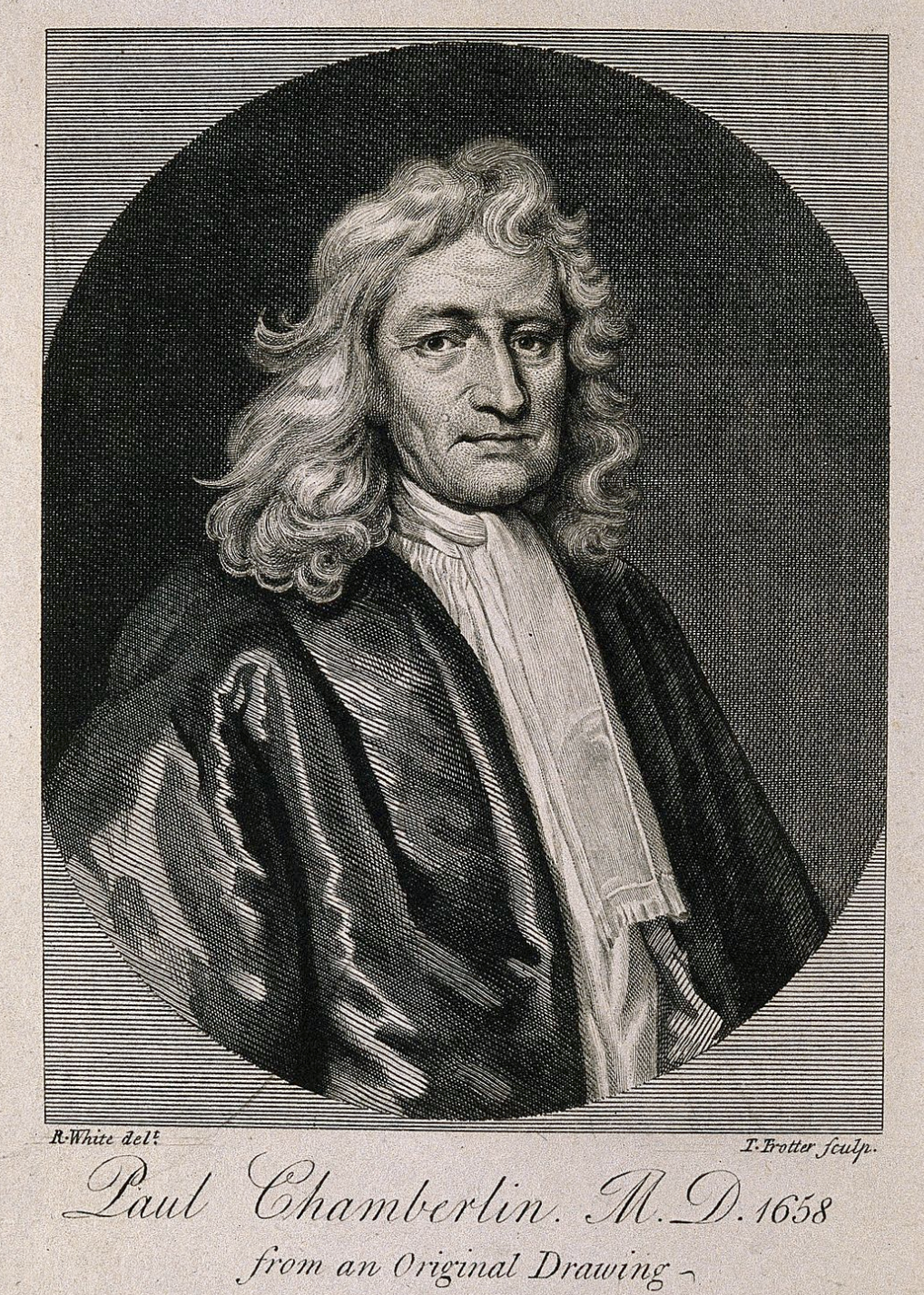
In 1621 he appeared three times as a candidate for examination at the College of Physicians, only to be told to wait and try again later, which he did on 26th July 1626 when he was one more examined and approved. He was reluctantly approved as a Fellow of the College on 7th April 1628 after first being told he needed to no longer follow frivolous fashion and become “subordinate to his seniors”8. On 10^th March 1631 he was admitted to Gray’s Inn in London9.
In June 1630 he married Jane Middleton at All Saints, Edmonton in Middlesex10. Jane was a daughter of Sir Hugh Middleton and his wife Jane (nee Olmstead) Middleton.
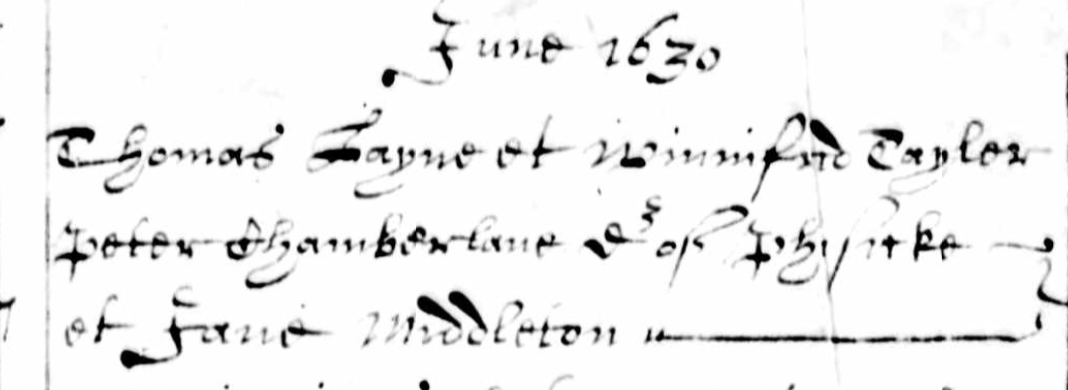
Over the next 15 years Peter and Jane had at least 10 children, 9 sons and one daughter. Although Peter had been baptised at a French Huguennot church, most of his children were baptised at the local Church of England parish, St Anne Blackfriars. For example his son Thomas was baptised 1st May 163211 and his son Abraham on 26th Jun 163912. Apparently Peter and Jane must have been in the Netherlands in 1645 as their last child together, John, was baptised there on 12th March 164513.
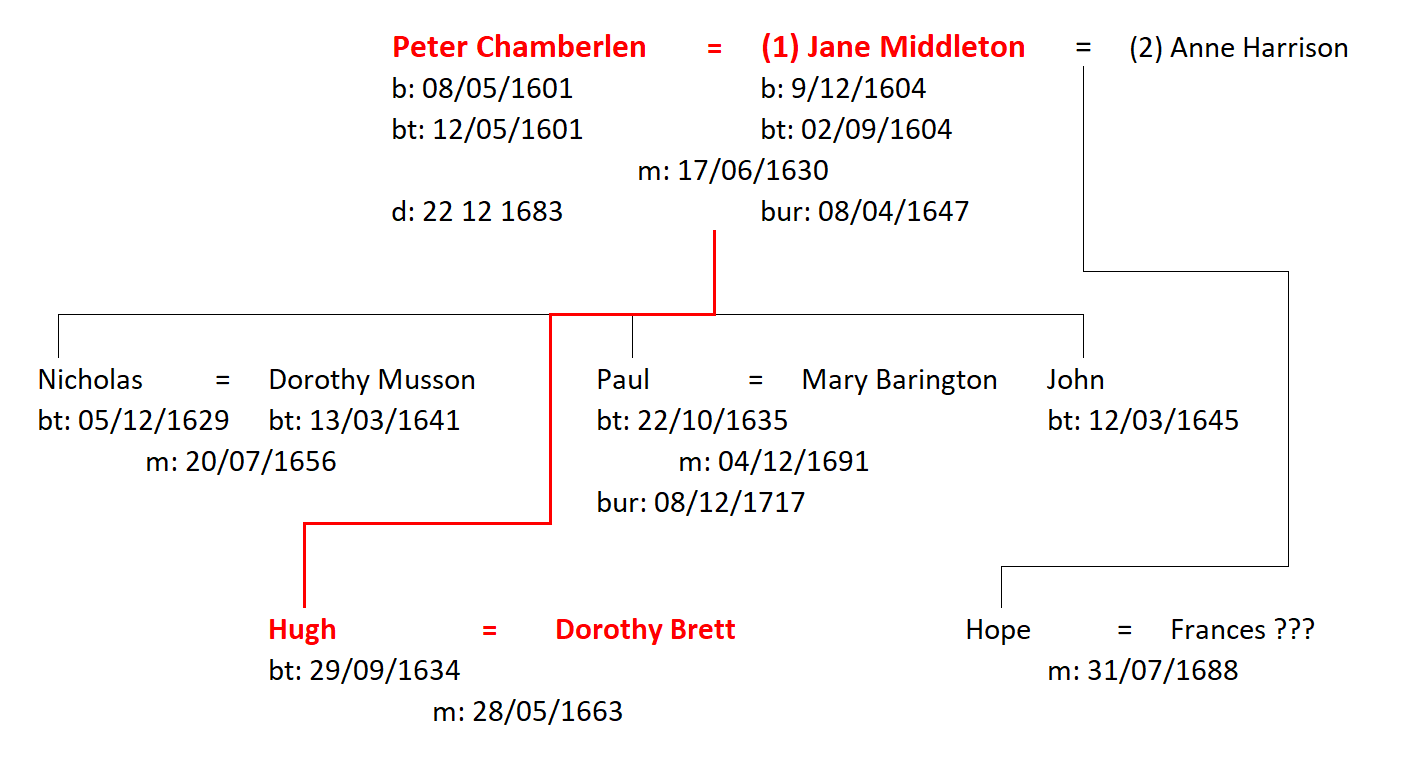
Soon after they returned to England Jane died and was buried at Blackfriars on 8th April 164714. Seven days before her burial, a stillborn child was buried, so it is very likely she died as a result of childbirth.
Several years later he remarried to Anne Harrison. They had at least one son named Hope.
He was obviously an accomplished Physician as he was appointed Physician Extraordinary to the King, and there are claims that it was recorded by the King himself that he was present at the birth of the future Charles II15. The invention of the obstetric forceps used in midwifery has been credited to the Chamberlen family, most likely being invented by his uncle Peter Chamberlen, and so he was in demand as a midwife. On the 28th August 1634 ata meeting of the College of Physicians there was a debate over the incorporation of midwifes16. This was an idea that his father had previously pursued. However, Peter was rebuffed by the College.
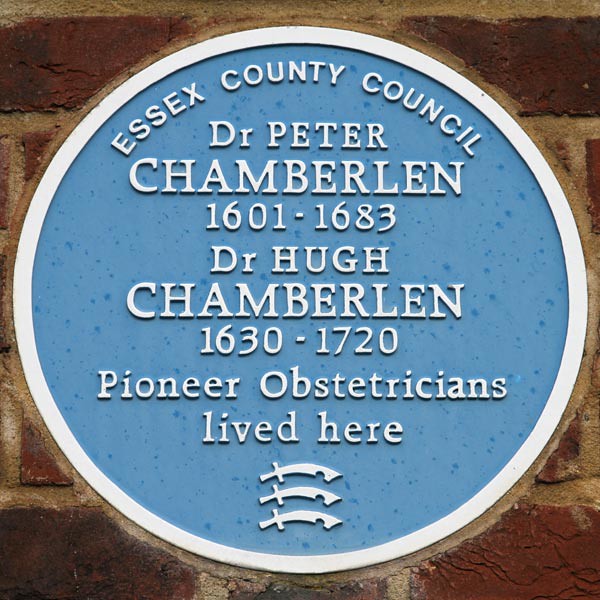
During the Commonwealth, Peter joined various Baptist congregations and after a rupture with the College of Physicians he moved to Essex in 1652 to escape their jurisdiction (see “Peter Chamberlen the Third” 2023). He had purchased Woodham Mortimer Hall in 1638. There is now a blue plaque recognizing Peter and his son Hugh.
Peter was a campaigner on a number of issues. In 1648 he petitioned Parliament for a monopoly on public baths, in which he was successful17. In 1649, he wrote a pamphlet on poor relief title “The Poore Man’s Advocate or England’s Samaritan pouring Oyle and Wyne into the Wounds of the Nation”, wherein he advocated for widespread nationalization18.
With the restoration of the Monarchy he wrote to Charles II pointing out that he was the only surviving royal physician from before the Commonwealth and in 1661 he was reappointed Physician in Ordinary to the King19
Peter died in 1683, at the age of 82 years. He was buried in Woodham Mortimer parish where there is a tomb with an epitaph. In his will he leaves his estate to his widow Anne and his youngest son Hope, as he states that he has provided for all of his other children during his lifetime20.
Here lyes ye body of Doctor Peter Chamberlen, who was born on the 8th of May, 1601, and died on the 22nd of December, 1683, being aged 82 years, 7 months, and 14 days. He had 2 wives, and by ye first, Jane Middleton, had 11 sons and 2 daughters, and amongst them 45 grandchildren and 8 great-grandchildren, whereof were living at his death 3 sons, viz., Hugh, Paul, and John, and his 2 daughters and 20 grandchildren, and 6 great-grandchildren. By ye second, Ann Harrison, he had 3 sons and 2 daughters, whereof only Hope was living at his death, who hath erected this monument in memory of his father.
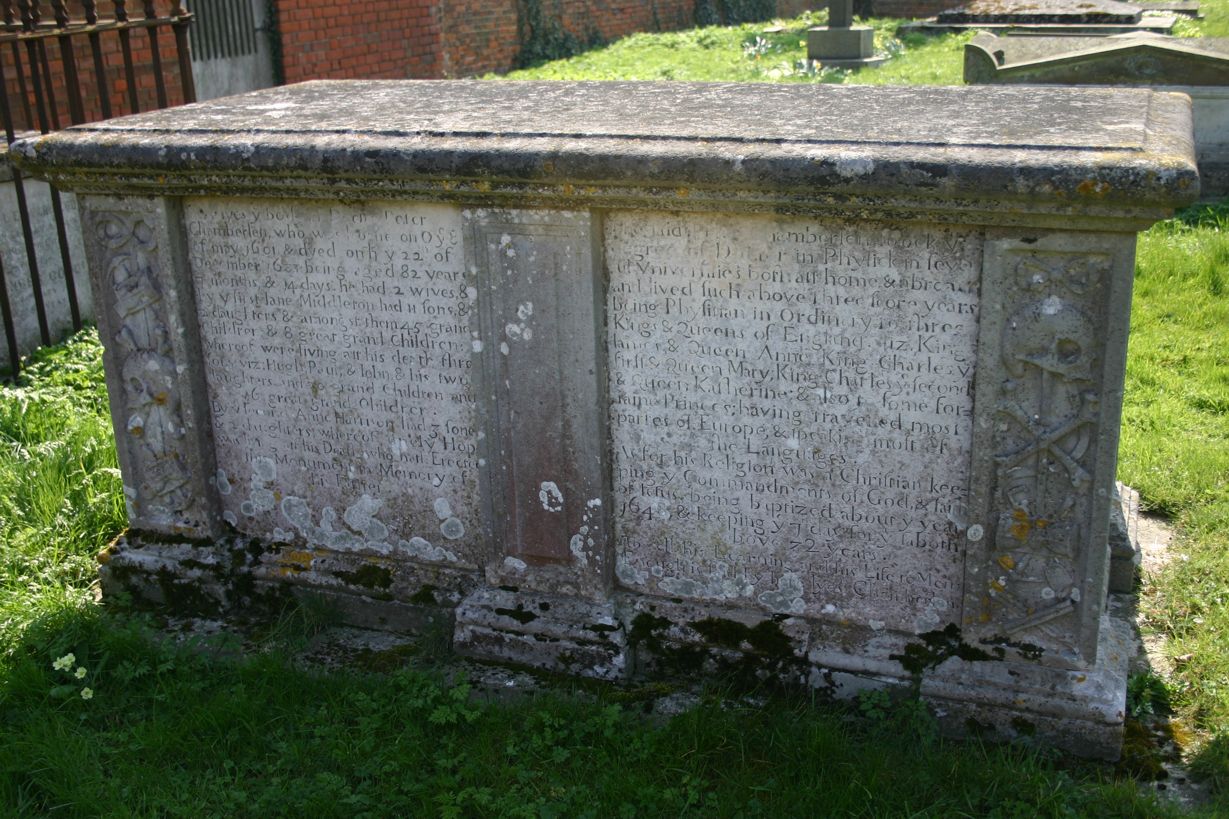
References
Aveling, J. H. 1882. The Chamberlens and the Midwifery Forceps. London: J. & A. Churchill. https://archive.org/details/chamberlensandm01avelgoog/page/n10/mode/1up.
“Calendar of State Papers, Domestic - Charles II.” 1660-1685. British History Online, Institute of Historical Research. 1660-1685. https://www.british-history.ac.uk/series/calendar-state-papers-domestic-charles-ii.
“England & Wales, Prerogative Court of Canterbury Wills, 1384-1858.” 2013. Ancestry.com. 2013. https://www.ancestry.co.uk/search/collections/5111/.
Foster, Joseph. 1889. The Register of Admissions to Gray’s Inn, 1521-1889, Together with the Register of Marriages in Gray’s Inn Chapel, 1695-1754. Vol. 4. London: Hansard Publishing Union Limited. https://hdl.handle.net/2027/coo1.ark:/13960/t0ns1b981.
———. 1892. “Alumni Oxonienses: The Members of the University of Oxford, 1500-1714.” Oxford, England: Parker & Co. 1892. https://www.ancestry.co.uk/search/collections/8942/.
“House of Lords, Journals.” 1509-1793. British History Online, Institute of Historical Research. 1509-1793. https://www.british-history.ac.uk/series/house-lords-journals.
“London, England, Church of England Baptisms, Marriages and Burials, 1538-1812.” 2010. Ancestry.com. 2010. https://www.ancestry.co.uk/search/collections/1624/.
“Merchant Taylors’ School, Northwood.” 2024. Wikipedia; Wikimedia Foundation. 2024. https://en.wikipedia.org/w/index.php?title=Merchant_Taylors%27_School,_Northwood&oldid=1219065334.
“Peter Chamberlen the Third.” 2023. Wikipedia; Wikimedia Foundation. 2023. https://en.wikipedia.org/w/index.php?title=Peter_Chamberlen_the_third&oldid=1187175669.
Robinson, Rev Charles John. 1882. A Register of the Scholars Admitted into Merchant Taylors’ School : From a. D. 1562 to 1874. Vol. 1. Lewes: Farncombe; Co. https://archive.org/details/aregisterschola01schogoog/page/n6/mode/1up.
“UK, Foreign and Overseas Registers of British Subjects, 1628-1969.” 2013. Ancestry.com. 2013. https://www.ancestry.co.uk/search/collections/1993/.
“University of Padua.” 2024. Wikipedia; Wikimedia Foundation. 2024. https://en.wikipedia.org/w/index.php?title=University_of_Padua&oldid=1210413187.
Venn, John. 1922. Alumni Cantabrigienses; a Biographical List of All Known Students, Graduates and Holders of Office at the University of Cambridge, from the Earliest Times to 1900, Part 1. Vol. 1. Cambridge, England: Cambridge University Press. https://archive.org/details/alumnicantabrigipt1vol1univiala/page/n6/mode/1up.
Footnotes
-
When showing relationships F means Father, M means Mother, U means Uncle and A means Aunt. So FFM is my father’s father’s mother, and FFMU is my father’s father’s mother’s uncle.↩
-
Peter’s father Peter was styled the younger to distinguish him from his older brother who was also called Peter.↩
-
Chapel of the Hospital, Spitalfields Walloon and French Protestant, 1599 - 1636, [see EnglandWales-NonConformist1567], RG4/4587/100.↩
-
see (Robinson 1882), p. 67.↩
-
see (Aveling 1882), p. 31.↩
-
see (Foster 1892), volume 1, p. 258.↩
-
see (Aveling 1882), p. 32.↩
-
see (Foster 1889), p. 192.↩
-
The Parish Register of All Saints, Edmonton, 1557 - 1778, [see London-BMB1538], Dro/040/A/01/001, p. 56.↩
-
Parish Register of St Ann, Blackfriars, 1560 - 1700, (see “London, England, Church of England Baptisms, Marriages and Burials, 1538-1812” 2010), P69/Ann/A/001/Ms04508/001, p. 55.↩
-
The Hague: Baptisms, Marriages, Deaths and Burials, 1627 - 1716, (see “UK, Foreign and Overseas Registers of British Subjects, 1628-1969” 2013), RG33/83/25.↩
-
The Hague: Baptisms, Marriages, Deaths and Burials, 1627 - 1716, (see “UK, Foreign and Overseas Registers of British Subjects, 1628-1969” 2013), RG33/83/25.↩
-
Parish Register of St Ann, Blackfriars, 1560 - 1700, (see “London, England, Church of England Baptisms, Marriages and Burials, 1538-1812” 2010), P69/Ann/A/001/Ms04508/001, p. 49.↩
-
see (“Calendar of State Papers, Domestic - Charles II” 1660-1685), volume 31, p. 519.↩
-
see (Aveling 1882), p. 34.↩
-
see (“House of Lords, Journals” 1509-1793), volume 10, p. 165.↩
-
see (Aveling 1882), p. 78.↩
-
see (“Calendar of State Papers, Domestic - Charles II” 1660-1685), volume 31, p. 519.↩
-
The Will of Peter Chamberlen, dated 4 May 1681, (see “England & Wales, Prerogative Court of Canterbury Wills, 1384-1858” 2013), PROB 11/375/14.↩